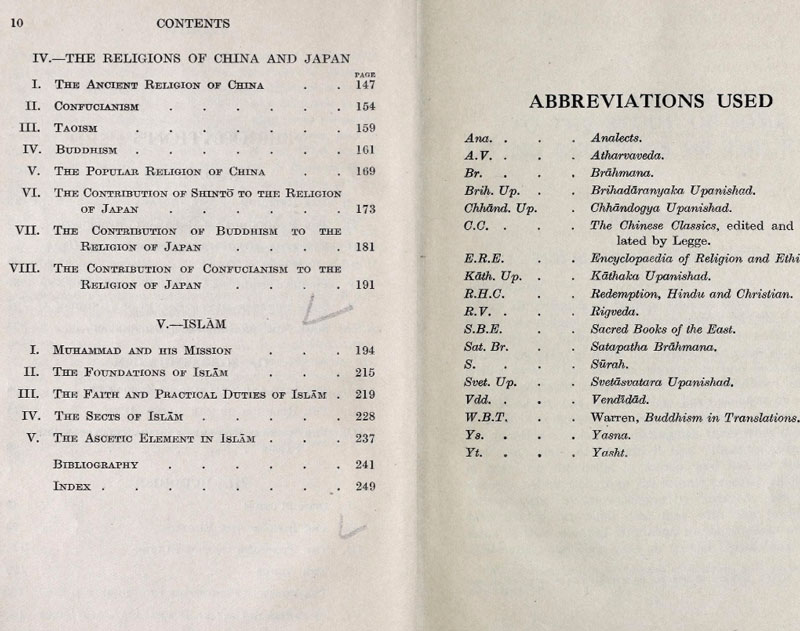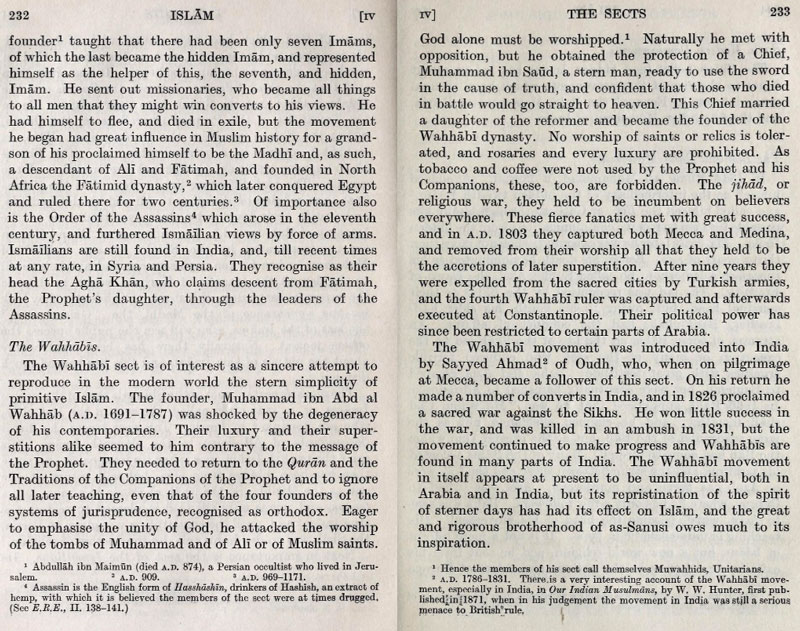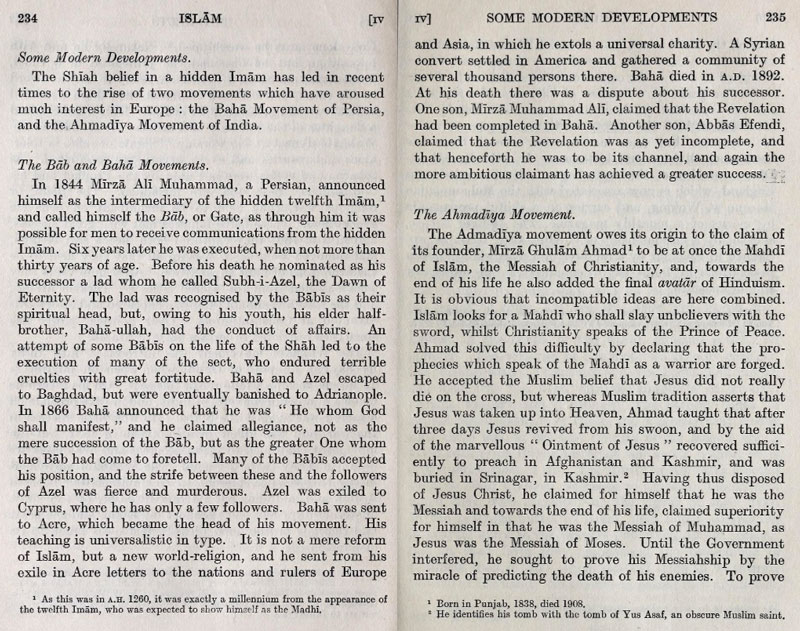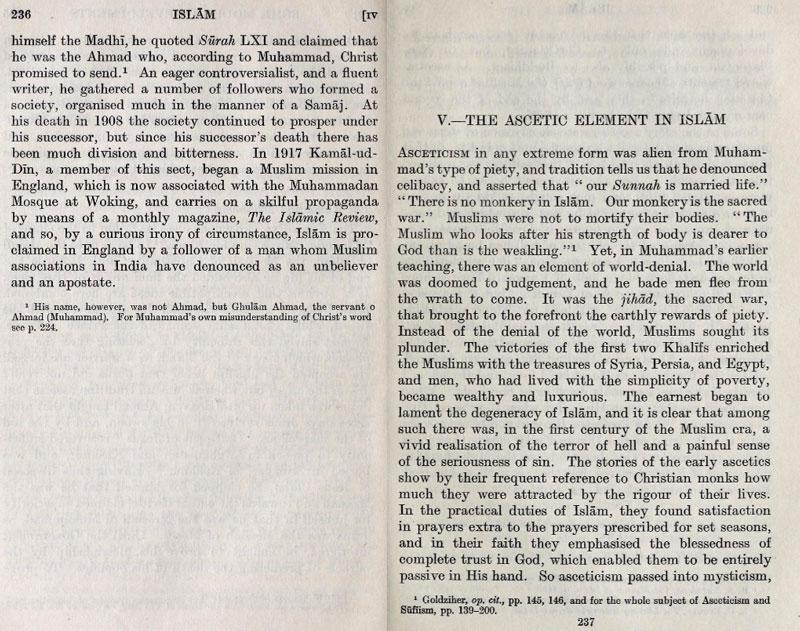
|
|
Abstract: One-paragraph overview of the lives of The Báb and Bahá'u'lláh. Notes: This book is online in a variety of formats at archive.org. |
Introduction to the Study of Some Living Religions of the East
by Sydney Cave
pages 234-235London: Duckworth & Co., 1921
1. Text
The Báb and Bahá Movements.In 1844 Mírzá Alí Muhammad, a Persian, announced himself as the intermediary of the hidden twelfth Imam,[1] and called himself the Báb, or Gate, as through him it was possible for men to receive communications from the hidden Imam. Six years later he was executed, when not more than thirty years of age. Before his death he nominated as his successor a lad whom he called Subh-i-Azel, the Dawn of Eternity. The lad was recognised by the Bábís as their spiritual head, but, owing to his youth, his elder half-brother, Bahá-ullah, had the conduct of affairs. An attempt of some Bábís on the life of the Sháh led to the execution of many of the sect, who endured terrible cruelties with great fortitude. Bahá and Azel escaped to Baghdad, but were eventually banished to Adrianople. In 1866 Bahá announced that he was “He whom God shall manifest,” and he claimed allegiance, not as the mere succession of the Báb, but as the greater One whom the Bab had come to foretell. Many of the Bábís accepted his position, and the strife between these and the followers of Azel was fierce and murderous. Azel was exiled to Cyprus, where he has only a few followers. Bahá was sent to Acre, which became the head of his movement. His teaching is universalistic in type. It is not a mere reform of Islám, but a new world-religion, and he sent from his exile in Acre letters to the nations and rulers of Europe and Asia, in which he extols a universal charity. A Syrian convert settled in America and gathered a community of several thousand persons there. Bahá died in A.D. 1892. At his death there was a dispute about his successor. One son, Mírzá Muhammad Alí, claimed that the Revelation had been completed in Bahá. Another son, Abbás Efendi, claimed that the Revelation was as yet incomplete, and that henceforth he was to be its channel, and again the more ambitious claimant has achieved a greater success.
1. As this was in A.H. 1260, it was exactly a millennium from the appearance of the twelfth Imám, who was expected to show himself as the Madhí [sic].
2. Images

|
|




